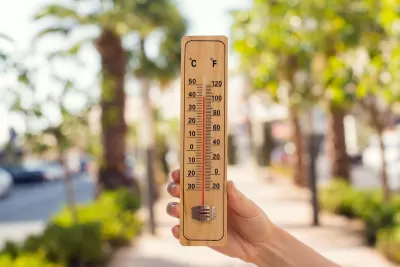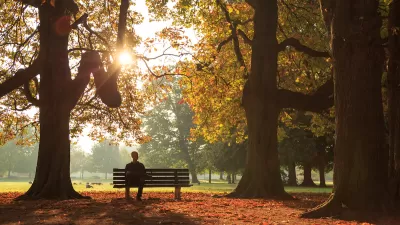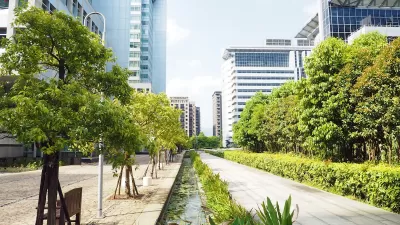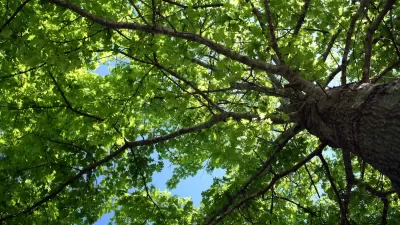A robust tree canopy can help reduce the urban heat island effect and lower air temperatures, but the impact is reduced as temperatures rise.

A new study from the University of New South Wales reveals that the ability of trees to combat overheating is reduced in extremely hot temperatures. “The findings, published in Sustainable Cities and Society, opens in a new window, show that conventional climate models overestimated the ability of trees to cool during heat waves by 60 per cent.”
The study poses a serious problem for cities relying on planting trees as a key part of their heat mitigation strategy. “It’s not to say that tree planting initiatives aren’t important for heat mitigation, but that large-scale planting policies require careful consideration,” said one of the study’s co-authors, Professor Mattheos (Mat) Santamouris.
As Ben Knight explains in the article, trees typically reduce surrounding air temperatures by 1 to 2 degrees Celsius in the daytime by releasing vapor through their leaves and absorbing heat. In high heat conditions, trees limit their transpiration, a factor not accounted for in current climate forecasts.
In the study’s sample of eucalyptus trees in Sydney, two-thirds of the trees were overestimated in their cooling ability during extreme heat by 60 percent. “Prof. Santamouris says decision-makers need to be more selective about the types of trees used and their various temperature thresholds. Under extreme temperatures, trees can also emit high concentrations of Biogenic Volatile Organic Compounds (BVOCs) like Isoprene, which can harm air quality when they interact with other atmospheric pollutants.”
Santamouris also warns that urban trees need adequate irrigation to provide optimal cooling benefits.
FULL STORY: Trees may not cool cities during heat waves as much as we thought

Planetizen Federal Action Tracker
A weekly monitor of how Trump’s orders and actions are impacting planners and planning in America.

Congressman Proposes Bill to Rename DC Metro “Trump Train”
The Make Autorail Great Again Act would withhold federal funding to the system until the Washington Metropolitan Area Transit Authority (WMATA), rebrands as the Washington Metropolitan Authority for Greater Access (WMAGA).

The Simple Legislative Tool Transforming Vacant Downtowns
In California, Michigan and Georgia, an easy win is bringing dollars — and delight — back to city centers.

The States Losing Rural Delivery Rooms at an Alarming Pace
In some states, as few as 9% of rural hospitals still deliver babies. As a result, rising pre-term births, no adequate pre-term care and "harrowing" close calls are a growing reality.

The Small South Asian Republic Going all in on EVs
Thanks to one simple policy change less than five years ago, 65% of new cars in this Himalayan country are now electric.

DC Backpedals on Bike Lane Protection, Swaps Barriers for Paint
Citing aesthetic concerns, the city is removing the concrete barriers and flexposts that once separated Arizona Avenue cyclists from motor vehicles.
Urban Design for Planners 1: Software Tools
This six-course series explores essential urban design concepts using open source software and equips planners with the tools they need to participate fully in the urban design process.
Planning for Universal Design
Learn the tools for implementing Universal Design in planning regulations.
Smith Gee Studio
City of Charlotte
City of Camden Redevelopment Agency
City of Astoria
Transportation Research & Education Center (TREC) at Portland State University
US High Speed Rail Association
City of Camden Redevelopment Agency
Municipality of Princeton (NJ)





























